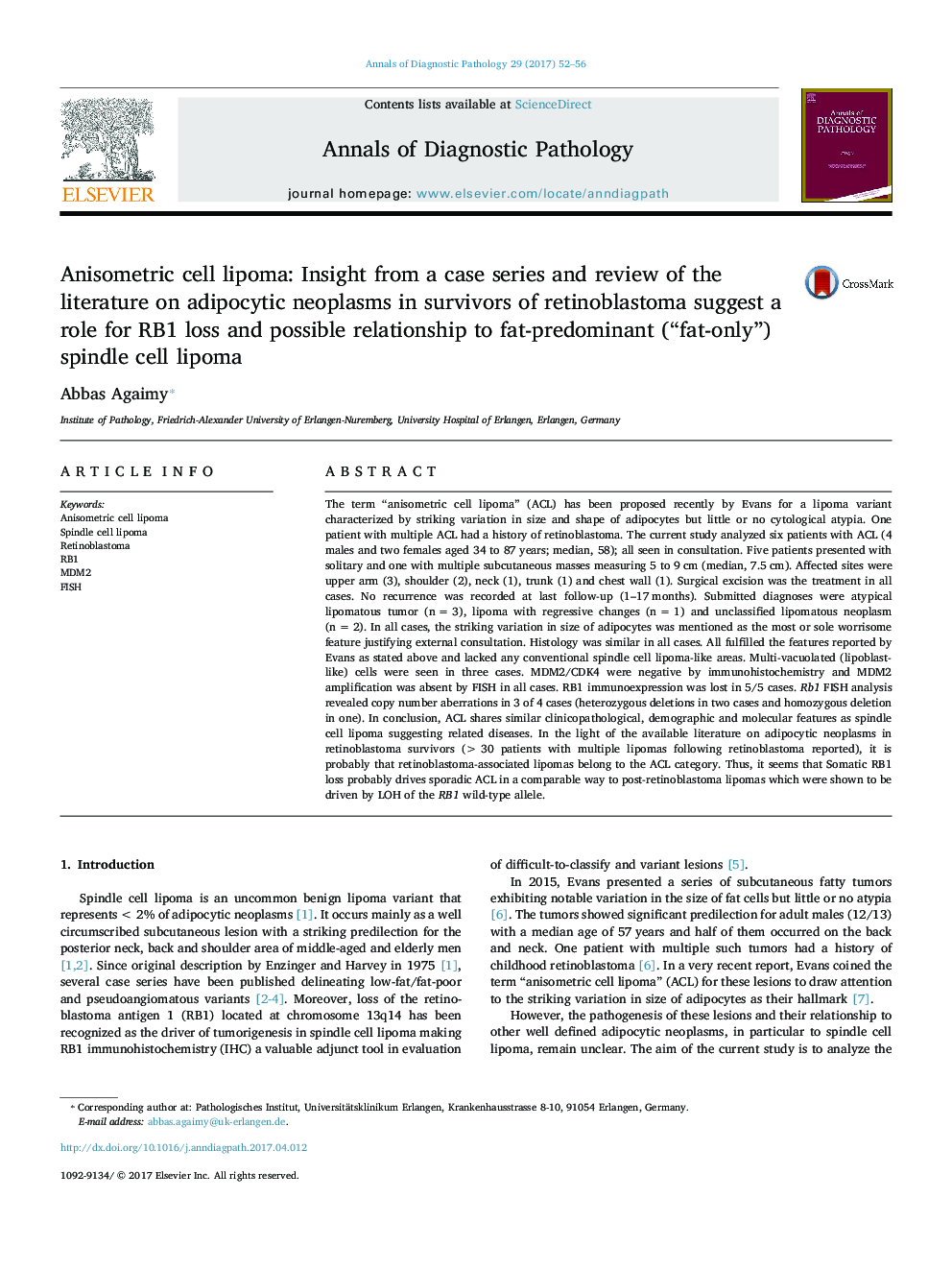| Article ID | Journal | Published Year | Pages | File Type |
|---|---|---|---|---|
| 5715847 | Annals of Diagnostic Pathology | 2017 | 5 Pages |
â¢Anisometric cell lipoma may closely mimic well differentiated liposarcoma/atypical lipoma.â¢Striking variation in size of adipocytes with no or no more than minimal atypia is the hallmark of this lesion.â¢Anisometric cell lipoma shows similar clinicopathological and demographic features as spindle cell lipoma.â¢Similarity between anisometric cell lipoma and multiple lipomas in retinoblastoma survivors suggests molecular analogy.â¢Somatic RB1 loss likely drives sporadic anisometric cell lipoma while post-retinoblastoma cases are due to germline Rb1 loss.
The term “anisometric cell lipoma” (ACL) has been proposed recently by Evans for a lipoma variant characterized by striking variation in size and shape of adipocytes but little or no cytological atypia. One patient with multiple ACL had a history of retinoblastoma. The current study analyzed six patients with ACL (4 males and two females aged 34 to 87 years; median, 58); all seen in consultation. Five patients presented with solitary and one with multiple subcutaneous masses measuring 5 to 9 cm (median, 7.5 cm). Affected sites were upper arm (3), shoulder (2), neck (1), trunk (1) and chest wall (1). Surgical excision was the treatment in all cases. No recurrence was recorded at last follow-up (1-17 months). Submitted diagnoses were atypical lipomatous tumor (n = 3), lipoma with regressive changes (n = 1) and unclassified lipomatous neoplasm (n = 2). In all cases, the striking variation in size of adipocytes was mentioned as the most or sole worrisome feature justifying external consultation. Histology was similar in all cases. All fulfilled the features reported by Evans as stated above and lacked any conventional spindle cell lipoma-like areas. Multi-vacuolated (lipoblast-like) cells were seen in three cases. MDM2/CDK4 were negative by immunohistochemistry and MDM2 amplification was absent by FISH in all cases. RB1 immunoexpression was lost in 5/5 cases. Rb1 FISH analysis revealed copy number aberrations in 3 of 4 cases (heterozygous deletions in two cases and homozygous deletion in one). In conclusion, ACL shares similar clinicopathological, demographic and molecular features as spindle cell lipoma suggesting related diseases. In the light of the available literature on adipocytic neoplasms in retinoblastoma survivors (> 30 patients with multiple lipomas following retinoblastoma reported), it is probably that retinoblastoma-associated lipomas belong to the ACL category. Thus, it seems that Somatic RB1 loss probably drives sporadic ACL in a comparable way to post-retinoblastoma lipomas which were shown to be driven by LOH of the RB1 wild-type allele.
